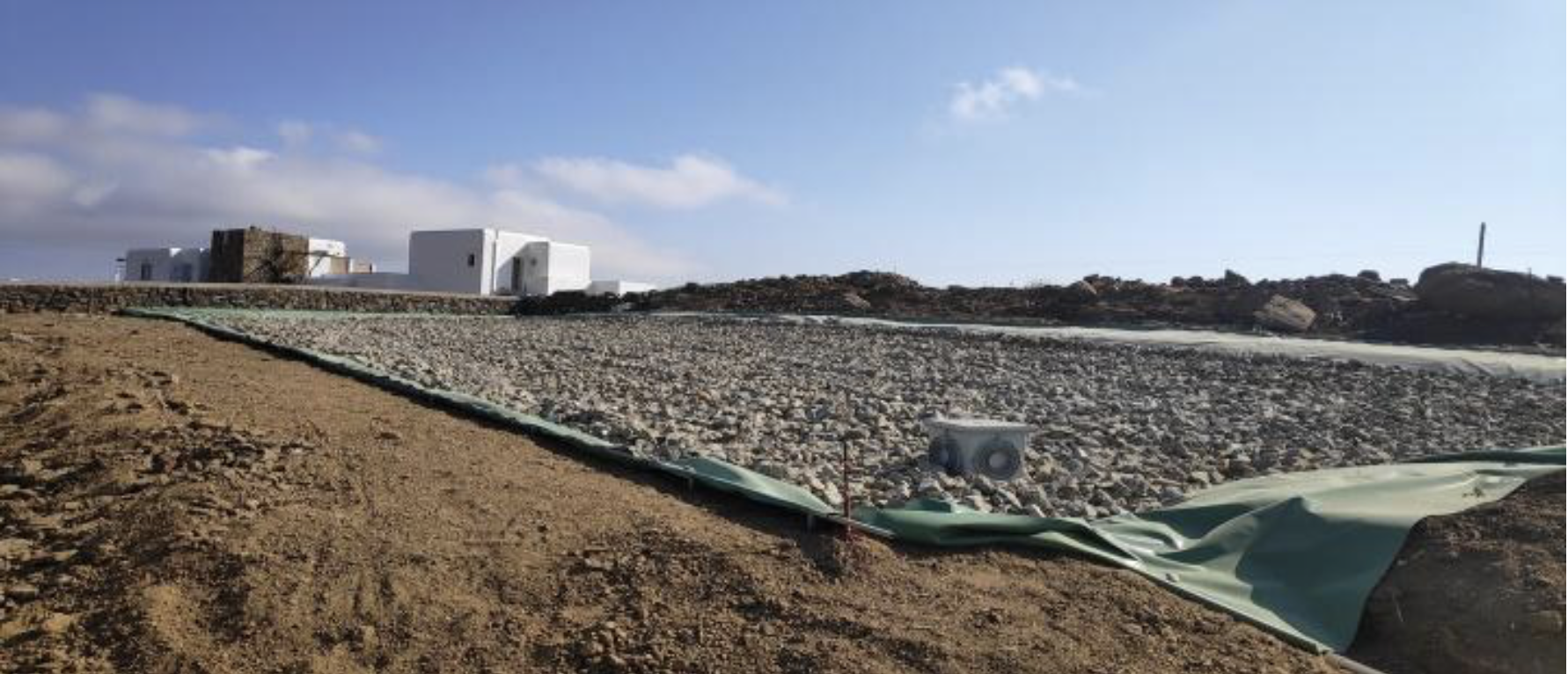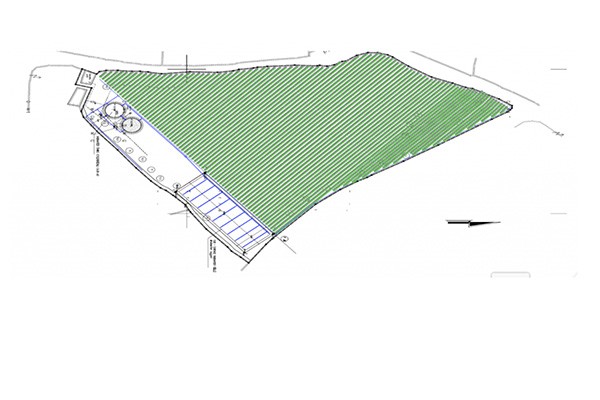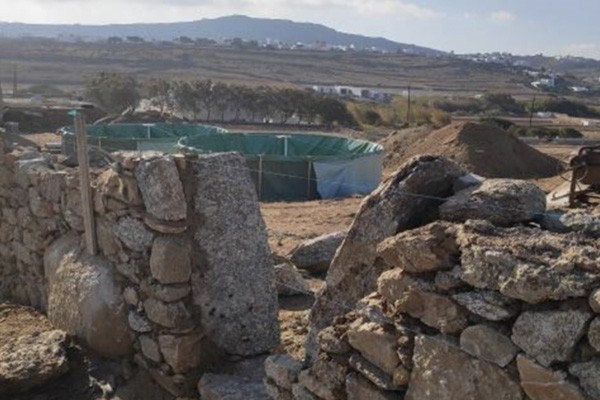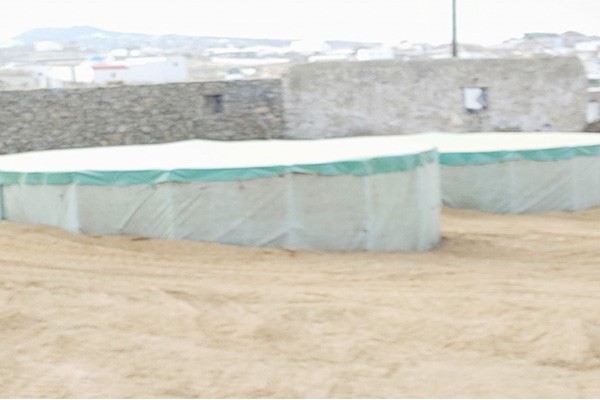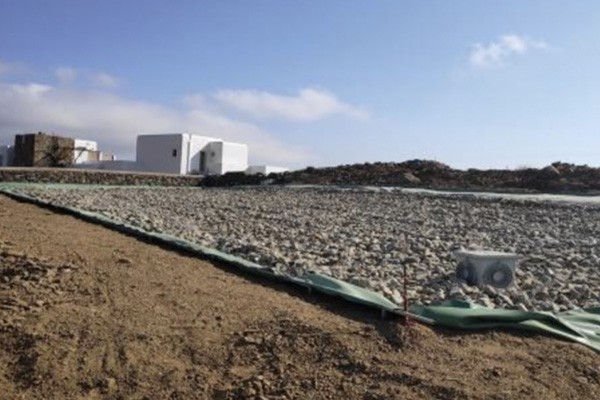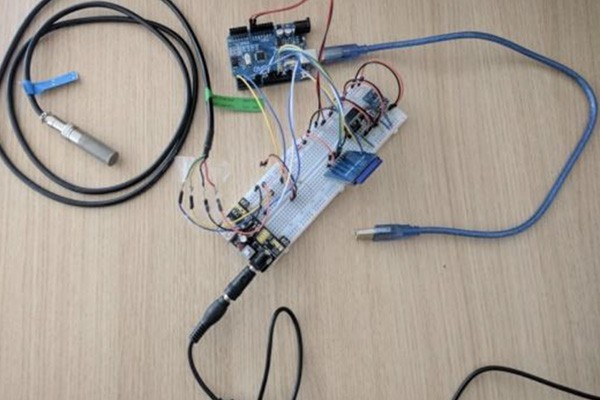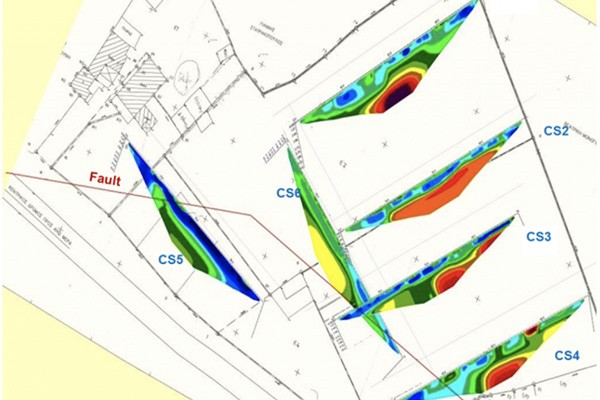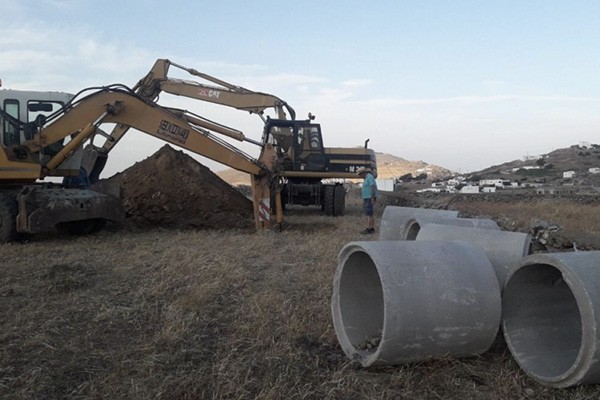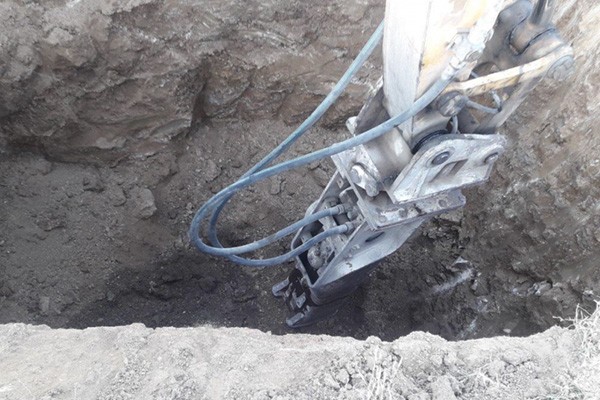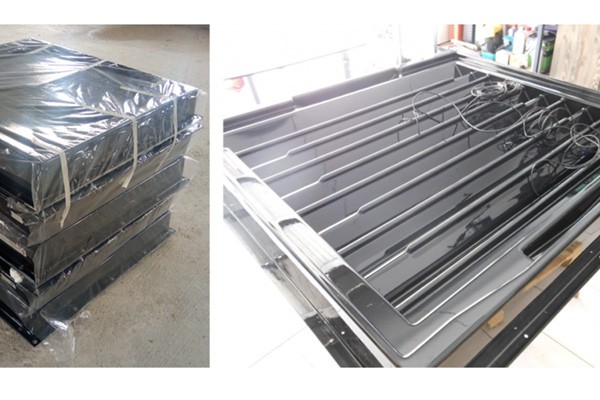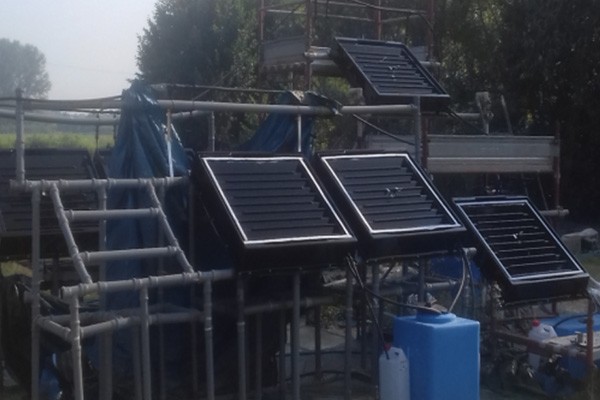HYDRO 1
HYDRO 1 demo site will treat the domestic wastewater of Antissa wastewater treatment plant (WWTP) located at the island of Lesvos, Greece. HYDRO1 combines anaerobic processes with constructed wetlands and disinfection to treat domestic wastewater is a completely circular solution where water and nutrias and the produced sludge will be reused. Furthermore, the anaerobic process will recover energy in the form of biogas which will then be upgraded to produce high purity methane used to fuel local vehicles.
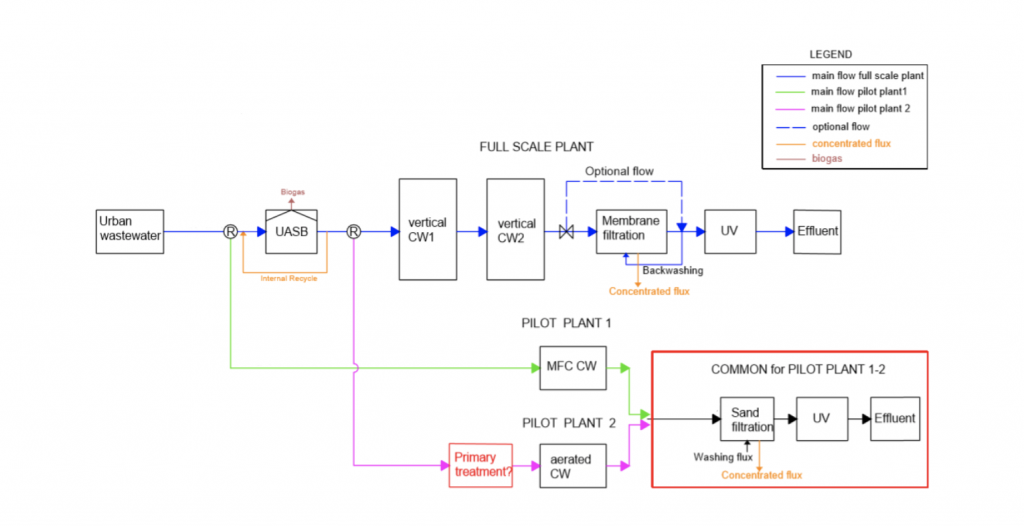
Flow chart of the basic treatment in HYDRO 1 site.
The flow chart showing the integrated upflow anaerobic sludge blanket – constructed wetland (UASB-CW) system used as a basic treatment in this site is presented below.
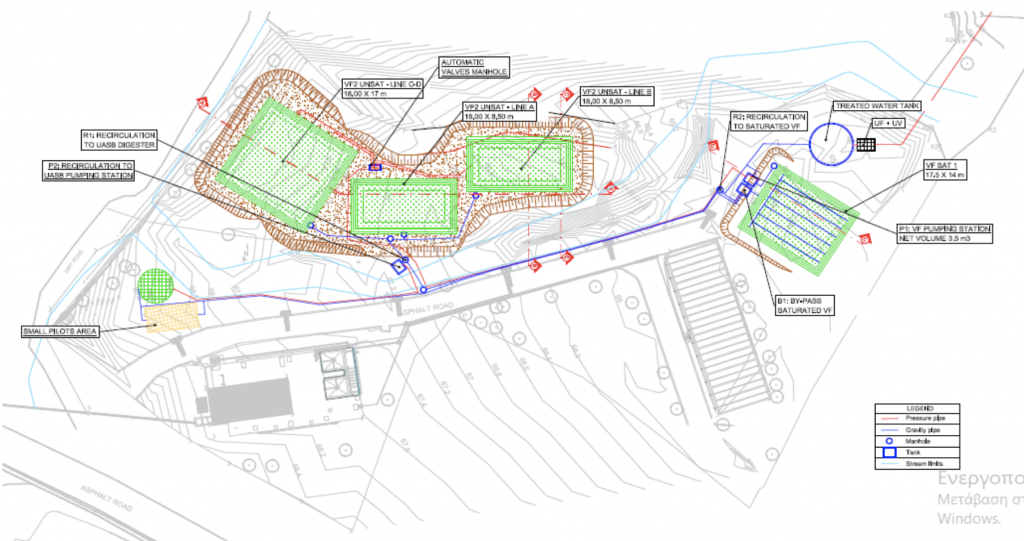
Layout of the installation for the domestic wastewater treatment of HYDRO1.
The design of the UASΒ reactor, the constructed wetlands, the composting reactor and the biogas upgrade have been completed. Preliminary laboratory analysis of the wastewater characteristics was also implemented.
The important step of the integration of the treatments was then concluded, coming up with the final design of a flexible complete treatment system aiming to guarantee the Greek limits for wastewater reuse in irrigation in terms of E Coli, suspended solids, BOD5. Recirculation and by-pass chambers allow to test up to 5 different configurations, investigating the best scheme for the Mediterranean conditions (e.g. different water quality standards). The probes required for monitoring the operation of the system have been selected. Everything is ready for the construction works to start.
HYDRO 2
HYDRO2 is an agroforestry system that will be fertigated using reclaimed water with a high nutrient content. The design of HYDRO 2 site has been finalised including the different irrigations systems (drip and stone channel), considering also the different kind of treated effluents that will be delivered by HYDRO1.

Layout of the HYDRO 2 site (distinction between different irrigation types and different water influents)
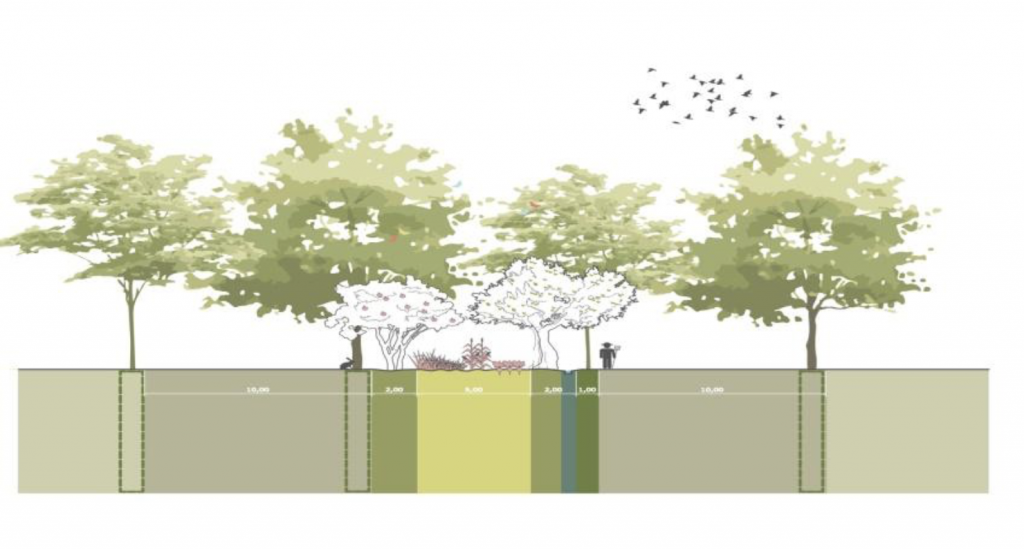
Details of the agroforestry design
Soil samples were sampled from the agroforestry field and analysed to determine their suitability for crop growth. During the first months of the project ALCN, IHA and AGENSO organised a workshop in Lesvos, getting in touch with the local farmers in order to engage them with the project and to exchange views on what plants would be the most appropriate (local-wise) and with high added-value. These activities were complimented with research from these teams to conclude the list of selected plants for the agroforestry, including trees, bushes, aromatic plants etc. The site preparation works for the configuration of the site have already started.

Stone wall preparation
HYDRO 3
HYDRO3 consists of a subsurface rainwater collection and storage system developed in a remote agricultural area. Rainwater is then used to irrigate an oregano field which is then valorised to produced essential oils. During the technical visits in Mykonos, in order to find the appropriate sites for HYDRO3&4, DELAROS team took soil samples from two areas (Skafes-Lia and Ampelokipi-Ano Mera) to analyse its physicochemical characteristics, the hydraulic properties and the mechanical compositiοn. Comparing and evaluating these data, Ano Mera was selected as the HYDRO3 site. Metereological data as well as topographical studies and on site evaluations were used to complete the calculations for HYDRO3 system.
The system was designed as final in June 2019.
In the core of “circular thinking” are the choice of local materials and the use of traditional construction techniques. Thus, the dry-stone wall in the field was restored and rebuilt in some parts.
- Layout of the HYDRO3 system
- Construction of dry-stone wall in HYDRO 3
The constructions works have started (September 2019) and will be completed soon. HYDRO3 will be ready to collect the water during the rainfall season of this winter.
- Water tanks in HYDRO3
- Final construction phase of the water collecting system (HYDRO3)
- Developing the weather station for HYDRO3 site
With regard to the pilot subsystems, the necessary sensors for monitoring and actuators for controlling will be integrated into ICT infrastructure. A list of the type of sensors, the monitored process, the point of installation as well the parameters that are monitored is finalised. A weather station is already developed and installed in the site by AGENSO able to collect and transfer online meteorological parameters e.g. rainfall, temperature, wind, humidity, pressure, cloud cover. This station will be used mainly in the operation period of the configuration to have precise data to optimize the design of the system.
HYDRO 4
During the first six months of the project, local climate, topographic data and field data (topographical, geographical and geophysical) were collected and investigated, with the aim of identifying the subsurface geological tectonics, the hydraulic settings and the hydrodynamic parameters such as the aquifer’s hydraulic gradient, permeability and storability. Based on the results of the geological and geophysical assessment of the demonstration site, the area was divided into two separate systems due to a geological fault. In particular, as shown in the Figure 1 the southern region is characterized by high hydraulic conductivities – permeable areas, while the northern region is characterized by impermeable soil characterized by very low hydraulic conductivity. In the northern part of the site, the potential for implementing aquifer storage and recovery system (ASR) is higher. Accordingly, the optimum location for ASR application is the area of cross-section 2 (CS2). In CS2 there is a shallow subsurface basin with impermeable layers of granite that could be used as a temporary water buffer. Water recovery can be accomplished through a small piezoelectric well for irrigation of lavender in summer. Based on the results of the site assessment, the design of HYDRO 4 was completed. Construction and preparation work on the demonstration site began in September 2019; the following figures show the construction of the well at the demonstration site in Ano Mera, Mykonos.
- Geophysical assessment of HYDRO4 demo site
- Construction and preparation works of the well at HYDRO4
- Excavation procedures for the construction of the well at HYDRO 4
HYDRO5
HYDRO5 is a nature-inspired low-cost desalination system based on the principles of evaporation and condensation. The design of the Mangrove Still system and the Saltwater Evaporation Greenhouse were completed by the first half year of the project. Figure.. shows the Mangrove Still system configuration, while in Figure… the layout of the Saltwater Evaporation Greenhouse is presented. The first prototype Mangrove Still system is ready and tested for data collection and optimization before the final implementation. The figure shows the supporting structure as well as the prototype system currently being tested. Regarding the Saltwater Evaporation Greenhouse one of the most important issues has been completed which is the selection of the plant species.
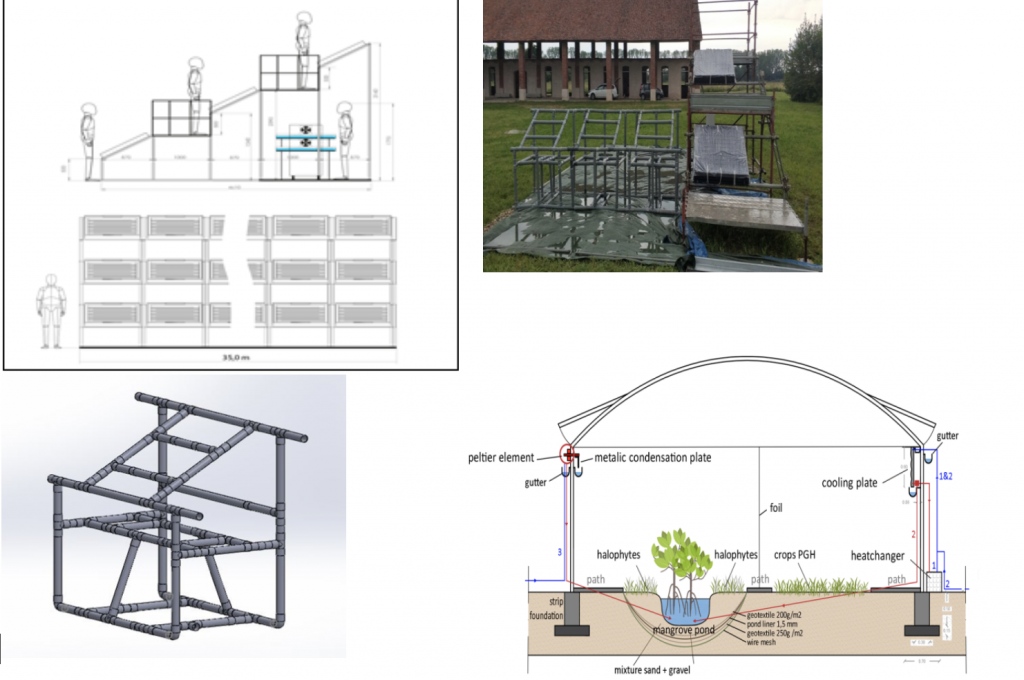
Supporting structure of Mangrove Still System (design and construction)
- Mangrove Still Units
- Mangrove Still System first prototyping
HYDRO6
In HYDRO6 rainwater and vapour water recovery systems are demonstrated within the facilities of the eco-tourist resort of ELT. Furthermore, wastewater is treated by reedbeds and is recycled locally in agriculture.
The design and preparatory work for the construction of the cistern, the roof top, and the greenhouse were implemented during the first 12 months of the project by ELT. Moreover, AGENSO’s team installed a prototype meteorological station in HYDRO6 from the first months of the project to collect data. Specifically, important parameters such as air humidity, rain, air temperature, solar radiation level and wind speed are constantly monitored. The meteorological station is connected to the project’s platform and is available for online monitoring. The rapid progress of the construction works is evident from the following figures, as the Greenhouse construction was completed before the completion of the first year of the project. At the same time, the building process of the cistern, the roof top for collecting water was completed and the tiny Lodge was ready for visitors. In all systems, the aesthetics of the landscape were taken into account, so as to be in harmony with the traditional buildings of the island of Tinos; therefore materials from the surrounding area were used.
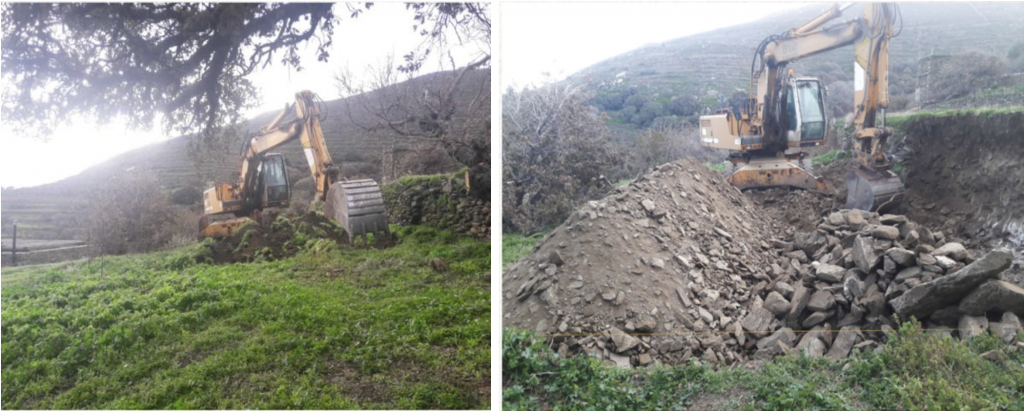
Construction works at Ecolodge’s facilities
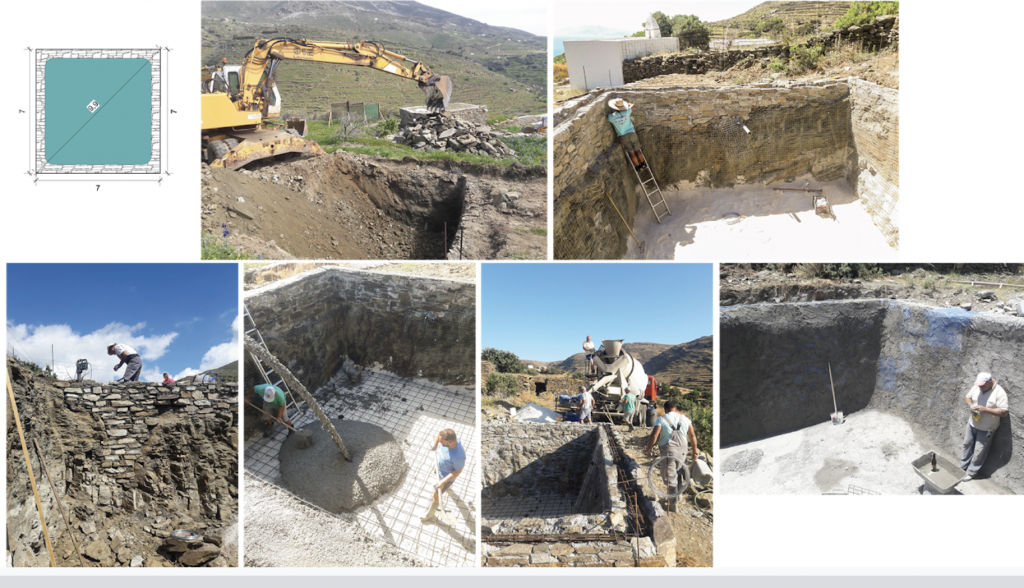
Cistern building process
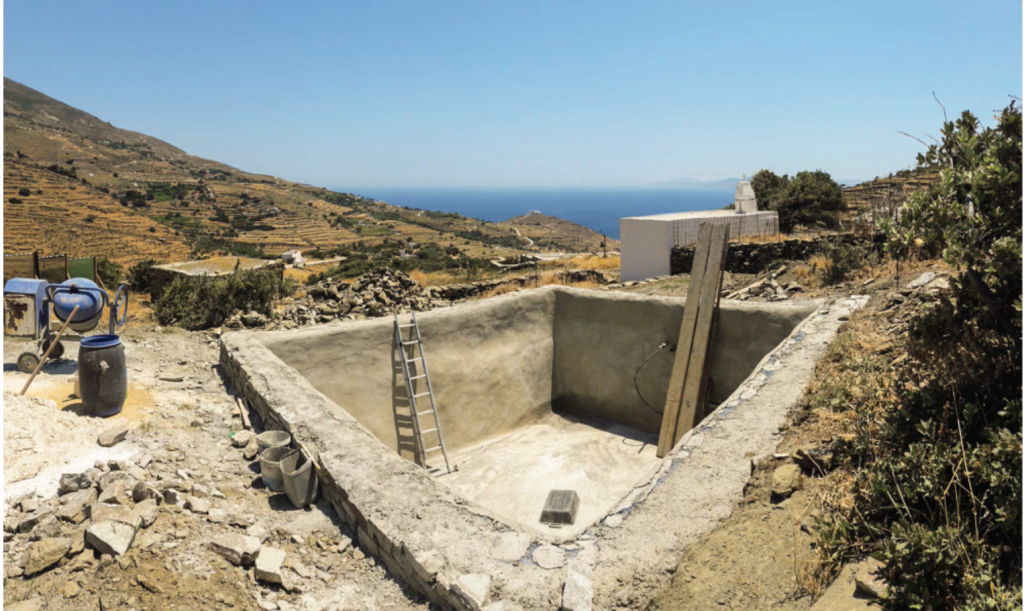
The cistern is almost ready before the end of the 1st year
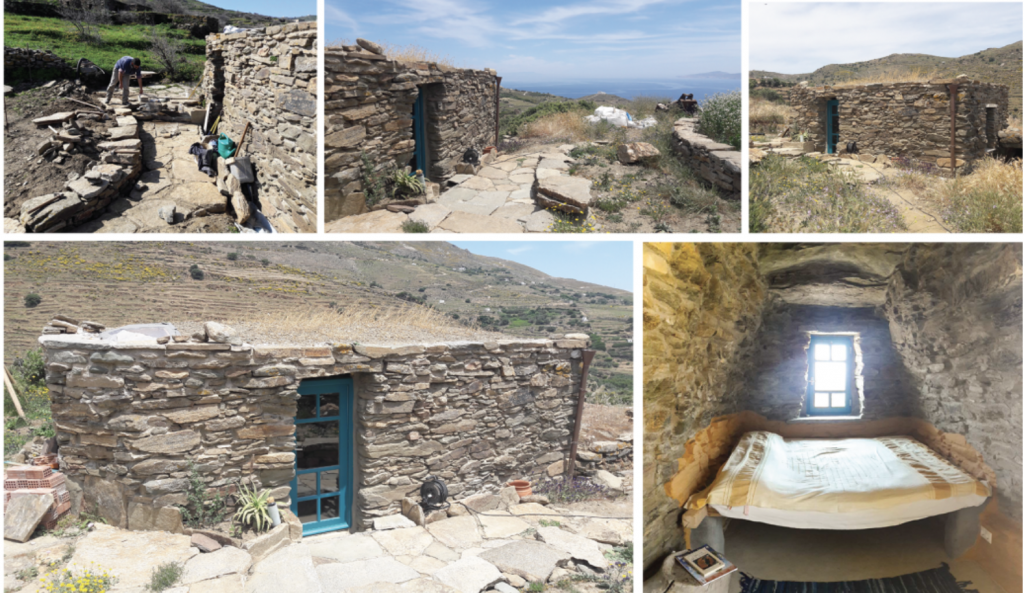
The tiny Lodge is ready for enjoyment by eco-tourists
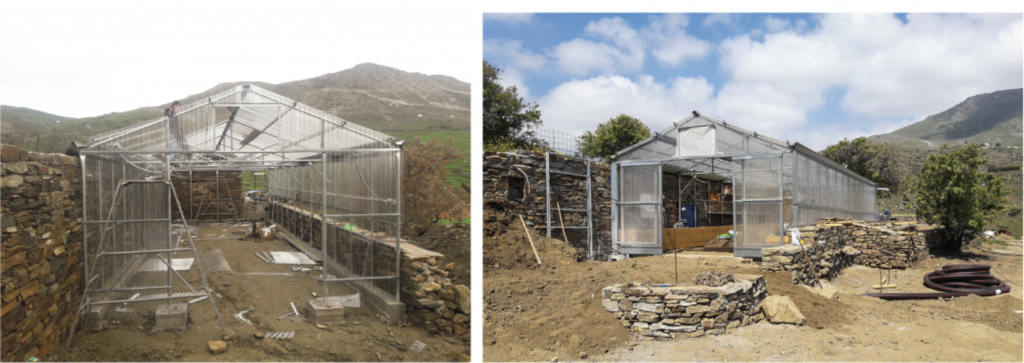
Progress of construction works (January 2019 – July 2019)
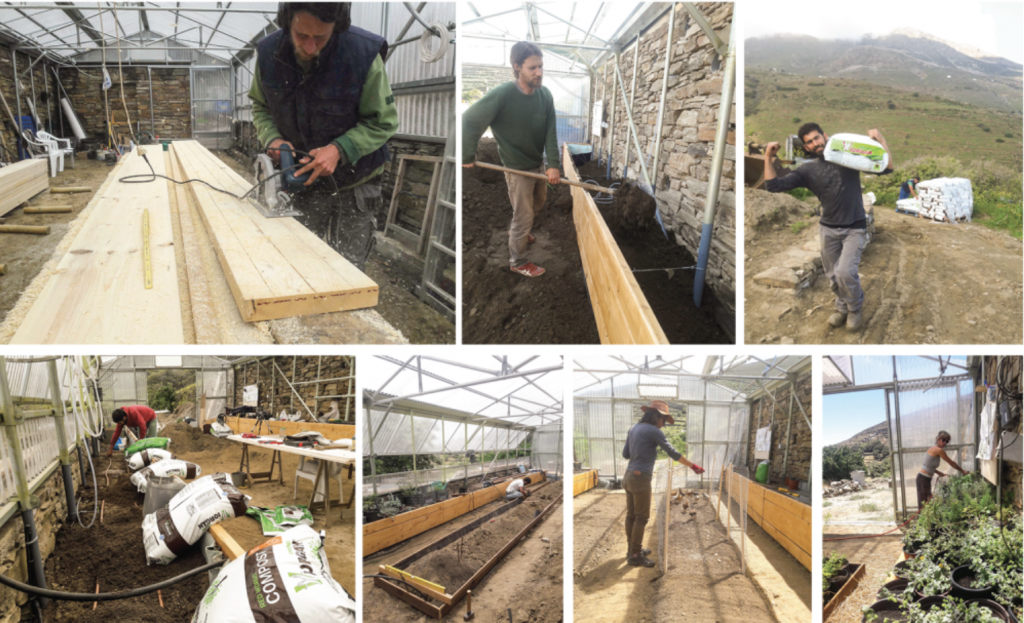
Building process of Greenhouse
Apart from system’s design, construction works and preparation of the demonstration sites, the project has made significant progress in collecting data for LCA and LCC, and the first draft models have been developed in UMBERTO. The greenhouse gas emission (GHG) monitoring strategy has already been developed for each demo site, while the sensors to be used for their measurement have already been selected. At the same time, a detailed analysis of EU legislation/regulation/normative framework has been carried out for each HYDRO. Finally, the list of the contents of the business plan is finalized and its content is currently being developed. The first version of the financial models for calculating the cost/revenue of HYDROs exploitation has been developed.


